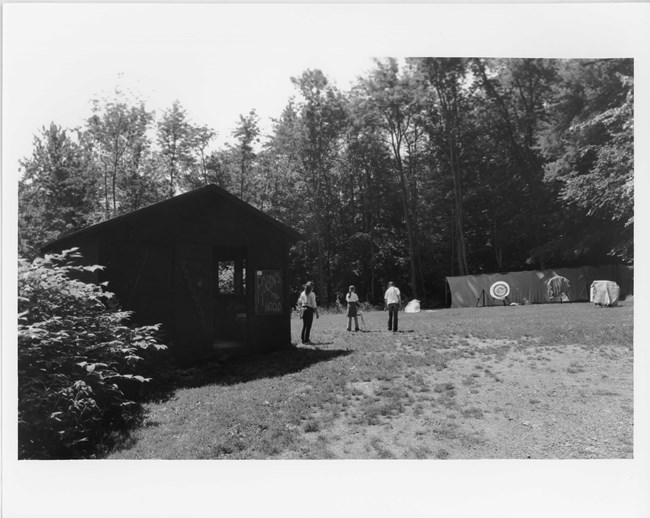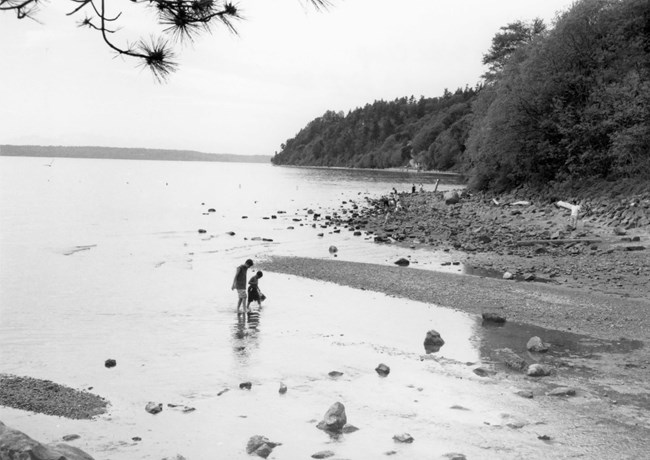Last updated: December 23, 2023
Article
Historic Summer Camps in the National Register of Historic Places

Photograph by Liz Pritchett, courtesy of the Vermont State Historic Preservation Office
Beginning in the early 19th century, American Romantic and Transcendental writers like Henry David Thoreau and Ralph Waldo Emerson promoted the beauty and restorative effects of America's natural landscape, encouraging Americans to embrace the wilderness that they had otherwise sought to control and commodify since colonization. As the country developed over the century, many Americans became increasingly wary of the country's rapid urbanization and industrialization. Spending time in the outdoors, which became more accessible as railroads were built, was soon presented by many thinkers, writers, and educators as the cure to the ills of modern life.
The idea that young boys, in particular, were "dying of in-door-ness" spurred the development of the first youth summer camps in the 1870s and 1880s. Early camping pioneers like Ernest Balch and George W. Hinckley believed that the natural environment would help young boys build character, uplift their spirits, and reclaim their masculinity from a "feminizing" society. In 1904, the camping movement received scientific credibility from G. Stanley Hall's Adolescence, which argued that immersion in nature was a necessary element of healthy development for children.

Photograph by Carmen Scott, courtesy of the Washington State Historic Preservation Office
Simultaneously, other groups began to adapt the same principles and structures of youth summer camps for their own purposes. Beginning in the 1920s, some ethnic communities, including Jewish, Finnish, and Chinese Americans, began to organize and host their own summer camps for children and adults alike with a focus on sharing cultural traditions and language. Church groups also began to look toward summer camps as a way to promote spiritual growth and fellowship, in a location free from the distractions of everyday life. In the 1930s, the National Park Service also began to help build the infrastructure for these recreational sites for public use under the direction of the Roosevelt adminstration and New Deal policies.
The properties presented below are a selection of summer camps listed in the National Register of Historic Places, reflecting the architectural, ethnic, organizational, and ideological diversity of American summer camps and how the idea of the summer camp has evolved over time. From a rustic camp for orphans in Colorado to a palatial summer estate in the Adirondacks, these properties emerged from a movement that pushed Americans, of every age, to escape urban life and enjoy the outdoors.
Bibliography
Bartos, Virginia L. "Camp Quinipet." National Register of Historic Places Nomination Form (Washington, DC: U.S. Department of the Interior, National Park Service, 2005), Section 9.Chapman, Ann E. "Nineteenth Century Trends in American Conservation." National Park Service: Stories of Massachusetts Conservation (2020). Nineteenth Century Trends in American Conservation (U.S. National Park Service) (nps.gov)
Gershon, Livia. "How American Tourism Began." JSTOR Daily (June 13, 2016). How American Tourism Began - JSTOR Daily
------"Summer Camp Has Always Been About Escaping Modern Life." JSTOR Daily (April 26, 2016). Summer Camp Has Always Been About Escaping Modern Life - JSTOR Daily
Smith, Michael B. “‘The Ego Ideal of the Good Camper’ and the Nature of Summer Camp.” Environmental History 11, no. 1 (2006): 70–101. http://www.jstor.org/stable/3985739
Weiss, Thomas. “Tourism in America before World War II.” The Journal of Economic History 64, no. 2 (2004): 289–327. http://www.jstor.org/stable/3874776.
The content for this article was researched and written by Emma Trone, an intern with the National Register of Historic Places.
